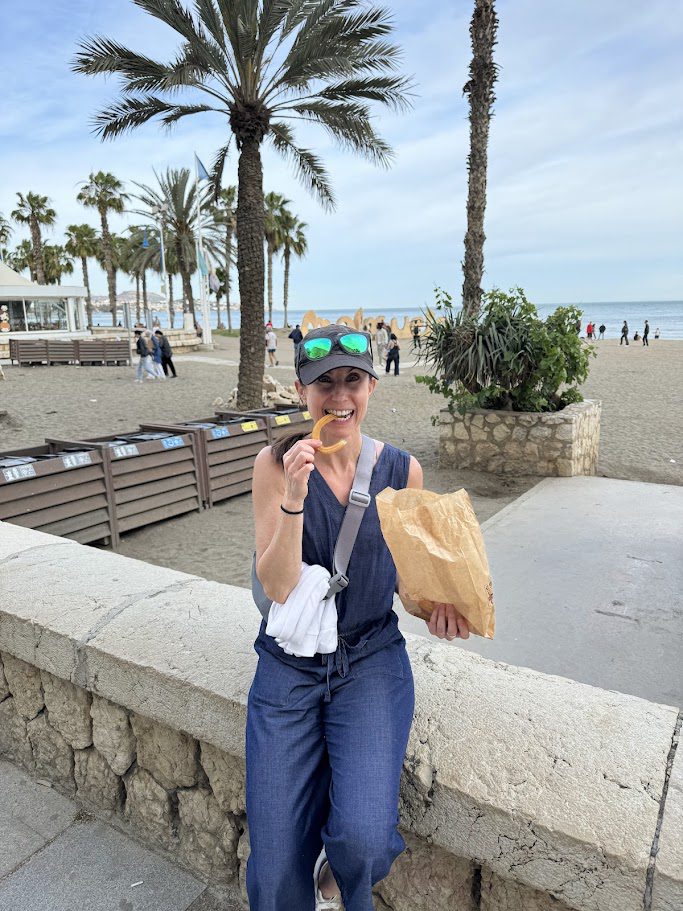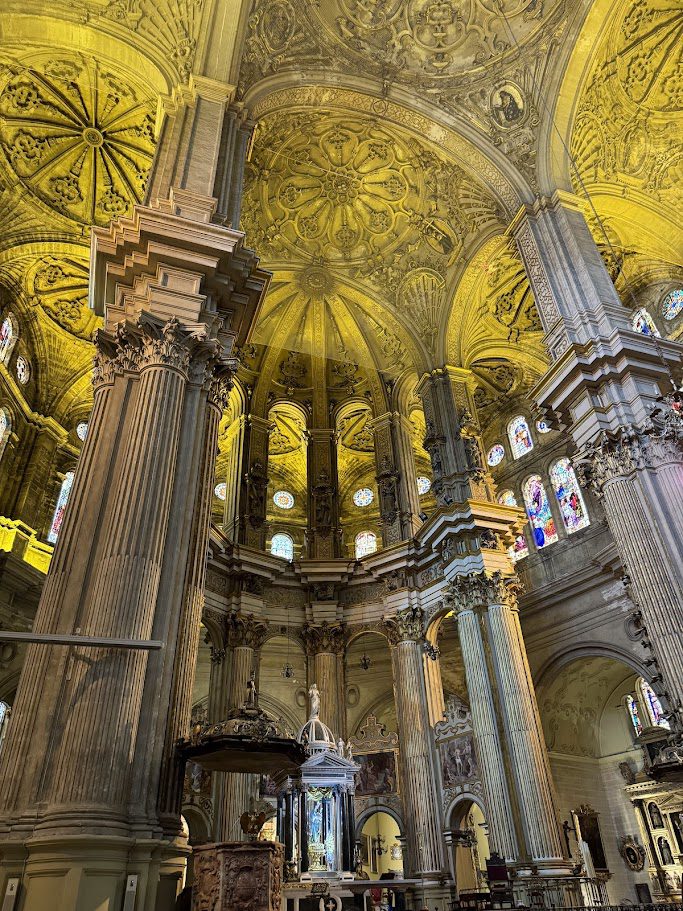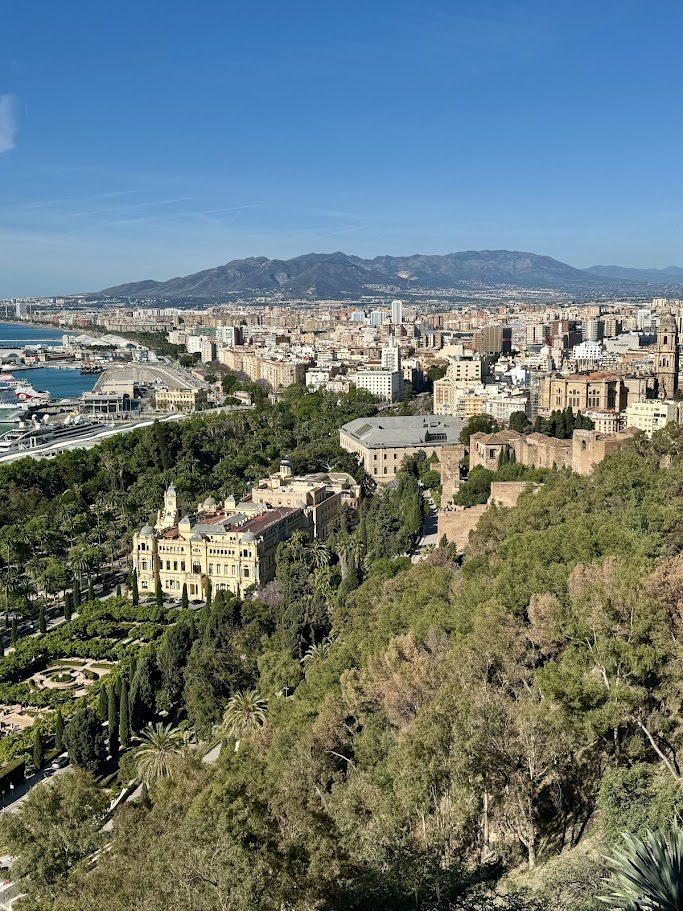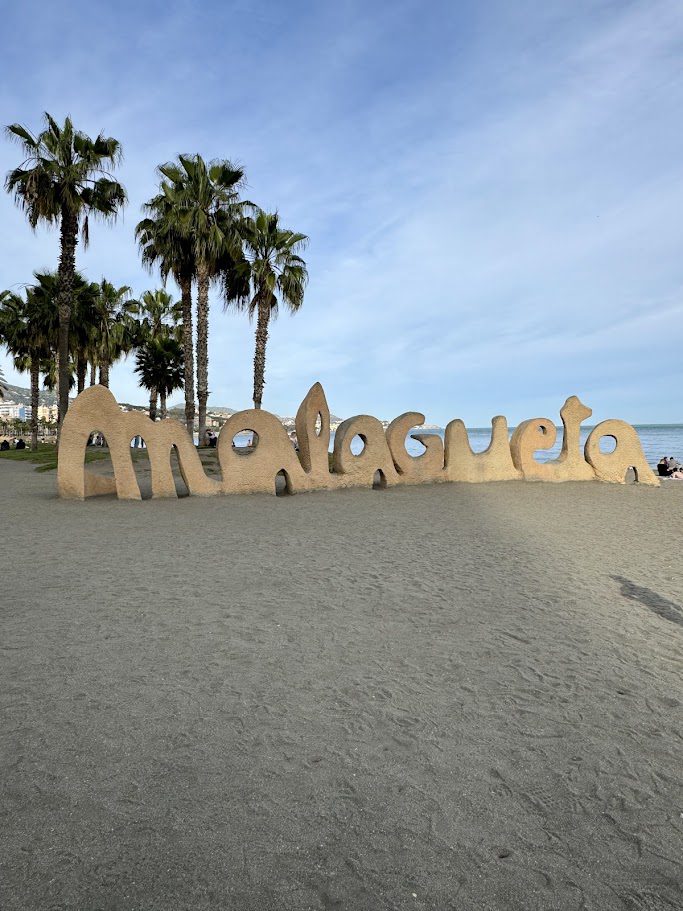
How To Spend A Day In Malaga, Spain
Welcome to Málaga, a radiant Andalusian city where ancient history blends seamlessly with modern Mediterranean life. Nestled on Spain’s Costa del Sol, Málaga offers far more than just beaches—think Moorish fortresses, contemporary art museums, palm-lined promenades, and a thriving food scene that surprises and delights. As both a mental health professional and an avid traveler, I found Málaga to be a place that gently restores your energy, offering the perfect mix of culture, sunshine, and soulful connection.
This guide includes everything you need to plan an unforgettable trip to Málaga, from navigating transportation to discovering the lesser-known gems that will truly elevate your experience. Whether you’re escaping for a weekend or planning a longer stay, Málaga offers a peaceful yet vibrant rhythm that will resonate deeply.
Malaga at a Glance
Language:
Spanish (Andalusian dialect)
Currency:
Euro
Time Zone:
Central European Time (GMT+1)
Walkability:
Excellent in city center
Electricity
230V, Type C & F plugs
Best Time to Visit:
April - June, Sept & October
What You Need To Know Before Visiting Malaga
Essential Planning Tips
- Book tickets in advance for popular attractions like the Alcazaba, Picasso Museum, and Caminito del Rey (day trip).
- Embrace a slower pace – the local lifestyle encourages lingering over meals and afternoon breaks.
- Prepare for late meals – lunch typically starts at 2 PM and dinner closer to 9 PM.
- Carry cash – many small shops still prefer it.
- Bring comfortable walking shoes – Malaga’s charm is best discovered on foot.
Cultural Etiquette
Andalusians are warm and expressive. Greetings are friendly and often include a cheek kiss. It’s common to linger in conversation, and time is a bit more fluid. Expect things to move at a slower, more relaxed pace.
Tipping isn’t mandatory but rounding up or leaving 5-10% for great service is appreciated.
How To Get Around Malaga
Public Transportation
Málaga’s public transport is simple but effective:
- Bus: EMT buses cover the city well, including beaches and neighborhoods outside the center.
- Metro: A small but growing metro system—mostly used by locals.
- Train: The Cercanías train connects the airport and nearby coastal towns.
Other Transportation Options
- Walking: The historic center is compact and mostly pedestrian-only.
- Bicycles and Scooters: Easy to rent and great for exploring the seafront.
- Taxis: Taxis: Readily available and affordable.
- Ride-sharing: Uber and Bolt are both active in Málaga.
Getting To and From the Airport
| Option | Duration | Cost | Notes |
|---|---|---|---|
| Cercanías Train | 12-15 minutes | €2.30 | Fast, frequent, connects to city center |
| Bus A Express | 20-25 minutes | €4.00 | Direct to city, runs every 30 minutes |
| Taxi | 15-20 minutes | €20-25 | Fixed fare from airport to center |
Where to Stay in Malaga
Málaga offers a variety of charming neighborhoods, each with a distinct vibe:
Centro Histórico (Historic Center)
The lively heart of Málaga filled with tapas bars, museums, and historical sites.
Perfect for: First-timers, culture lovers
Pros: Central, atmospheric, walkable
Cons: Can be noisy, especially on weekends
Soho Málaga
The artsy district known for street art, galleries, and alternative cafes.
Perfect for: Creatives, younger travelers
Pros: Cool vibe, near the port and center
Cons: Limited accommodation options
La Malagueta
Beachfront area near the bullring and port.
Perfect for: Beach lovers
Pros: Great views, near the water
Cons: Less nightlife, more touristy
Pedregalejo / El Palo
Traditional fishing neighborhoods east of the city.
Perfect for: Authentic local experience
Pros: Fewer tourists, great seafood
Cons: Farther from main attractions
Accommodation Options
| Type | Price Range | Best For |
|---|---|---|
| Boutique Hotels | €€€ | Couples, stylish stays |
| Apartments | €€ | Families, longer visits, independent travelers |
| Hostels | € | Solo travelers, social vibes |
| Guesthouses | €-€€ | Budget-conscious, quieter lodging |
What to Do in Malaga
Must-See Attractions
- Alcazaba – A stunning Moorish fortress with gardens and panoramic views
- Gibralfaro Castle – Overlooks the city and sea, worth the climb
- Picasso Museum – Málaga is Picasso’s birthplace and this museum is a must
- Catedral de la Encarnación – Known as “La Manquita” (the one-armed lady) for its unfinished second tower
- Atarazanas Market – A sensory feast of fresh produce and local flavors
Off the Beaten Path
- Cervantes Theatre – Catch a flamenco performance or concert
- Baños del Carmen – Rustic beachfront bar with amazing sunset views
- CAC Málaga (Contemporary Art Center) – Free entry and thought-provoking exhibits
- Jardín Botánico-Histórico La Concepción – A lush escape on the edge of the city
Day Trips from Málaga
Caminito del Rey
Dramatic cliffside walk through a gorge. Not for the faint of heart, but breathtaking.
Distance: 1 hour by train or tour
Nerja
Charming coastal town with turquoise coves and the famous Nerja Caves.
Distance: 1 hour by bus
Ronda
A stunning mountaintop town famous for its dramatic gorge and historic bridge.
Distance: 2 hours by train or car

Eat
I’m not a foodie, but I’ll always try desserts. After walking 44,000 steps, I ate every one of these churros!

History + Culture
Did you even visit a European city if you didn’t check out their main cathedral? Also home to a world-famous organ.

Get A View
Want a bird’s eye view of the city? Climb to the top of the Castillo de Gibralfaro. Summer visitors – Go early!
Food and Drink Experiences
Must-Try Local Specialties
Espeto de Sardinas – Grilled sardines on a stick, a Málaga beach classic
Gazpachuelo – A warm fish soup with mayo and potatoes
Fritura Malagueña – Assorted fried fish, served by the sea
Ajoblanco – Cold almond-garlic soup, often topped with grapes
Tarta Malagueña – Almond and raisin cake flavored with local sweet wine
Where to Eat
Markets
Mercado Central de Atarazanas – For fresh fruit, seafood, and local specialties
Mercado de Salamanca – Smaller, neighborhood vibe
Dining Culture
Tapas are meant to be shared slowly
Late dining is the norm (lunch around 2 PM, dinner at 9 PM or later)
Many places offer affordable menu del día options at lunch
Wish We Knew Before Visiting
Practical Insights
Many shops close mid-afternoon (siesta is real!)
Tap water is safe to drink
Free museum days: Sundays after 4 PM for many public museums
Málaga’s beaches are nice, but nearby towns may offer quieter alternatives
Summer heat is strong—pace yourself and hydrate!
Cultural Surprises
Locals are incredibly friendly—don’t be shy about striking up a conversation
Flamenco is more common in small venues and local peñas than big tourist shows
Málaga is much more than a beach destination—it’s rich with history and creativity
Expect relaxed service in restaurants—it’s part of the charm
Expert Travel Tips
Safety and Well-being
- Keep valuables in front pockets or hidden pouches
- Be wary of common scams (friendly strangers offering help, fake petitions)
- Stay hydrated, especially during summer months
- Apply sunscreen regularly – the Mediterranean sun is stronger than it feels
- Take breaks in shaded plazas when sightseeing during hot weather
Money-Saving Tips
| Tip | Description |
|---|---|
| Free Sundays | Most museums are free after 4 PM on Sundays |
| Menu del Día | Best lunch deal in town |
| Self-catering | Markets make it easy to prepare simple fresh meals |
| Tap Water | Safe and free—bring a reusable bottle |
Final Thoughts
Málaga is a city of subtle joy—less about flashy landmarks and more about slow pleasures. A place where an hour sipping coffee by the sea or wandering an orange-tree-lined plaza can be just as meaningful as visiting a museum. As a therapist, I was struck by how naturally Málaga invites presence and reflection.
Whether you’re enjoying sardines on the beach, climbing to a castle at sunset, or soaking in a thermal spa, Málaga gently nudges you back into your body, back into the moment. And that, to me, is the true magic of travel.


